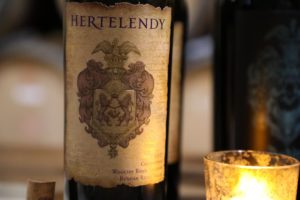
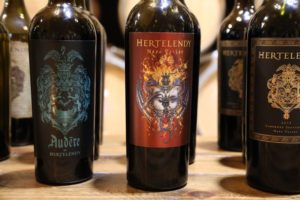
 Hertelendy Vineyards (pronounced ‘HUR-tuh-LEN-dee’) was founded by proprietor Ralph Hertelendy; his inaugural release was from 2013. His parents immigrated from Hungary to the United States as children to escape World War II and settled in the Oakland area of the San Francisco Bay Area. His father Paul was a music critic for the Oakland Tribune and San Jose Mercury News; he is in his 90s now and still contributes articles to artsf.com.
Hertelendy Vineyards (pronounced ‘HUR-tuh-LEN-dee’) was founded by proprietor Ralph Hertelendy; his inaugural release was from 2013. His parents immigrated from Hungary to the United States as children to escape World War II and settled in the Oakland area of the San Francisco Bay Area. His father Paul was a music critic for the Oakland Tribune and San Jose Mercury News; he is in his 90s now and still contributes articles to artsf.com.
Ralph is not the first of his family involved in wine. Ralph’s great Uncle, Gábor Hertelendy made wine in the small town of Badacsony in the hills on the north shore of Lake Balaton in Hungary where he grew several varieties, providing his white wines to the local cooperative. He grew the very unique Kéknyelű, a Hungarian white wine that is unable to self-pollinate – rather this variety requires both male and female plants. This is an economic hardship as vintners need twice the number of vines to produce half the normal yield.
During one of the annual wine tasting events promoting local producers, held in the center of Badacsony at Hableány (the headquarters for Laposa, a local family-owned winery), we were told there was only one hectare of Kéknyelű in 1990; today there are slightly more than 40 hectares planted in the region. Unfortunately, due to its very limited production, wines from this variety are not available internationally. Based on our limited tastings of this wine, in its youth it is crisp, refreshing and features citrus like qualities – but with merely a few years of age, it dramatically can change and develop additional complexities in the bottle.
Badacsony is about a two-to-2.5-hour drive from central Budapest. The region’s grapes are primarily planted on the hillsides in rocky volcanic soils dominated by white varieties. Gábor Hertelendy’s original manor is still standing, today known as the Szedgedy Roza Haz Museum (Szegedy Róza-ház Irodalmi Emlékmúzeum), formerly known as the Kisfaludi Museum. This gorgeous house was built in 1795 and is currently used to display the works and collection of Hungarian romance poet, Sándor Kisfaludy and his wife Róza Szegedy who used to live here. Information is also housed inside about the region’s viticulture history with displays inside the former winery operations room. Two bronze statues of Sándor and Róza are located outside the museum along with a nearby old grape press which perhaps at one point wasmused by Gábor Hertelendy. The museum is open seasonally as is the next door Hertelendy Borozo Vinoteka – serving local wines and small bites.
Several other attractions are located within walking distance or a short drive including small restaurants and wine tasting rooms. Continuing for a very short way up the road from the Hertelendy Memorial Szedgedy Roza Haz Museum is a small parking lot with a short trail leading to a prominent historical rock called Rozsako (Rose Stone), known for its romantic characteristics and a picturesque view of Lake Balaton and the surrounding hillsides. One can also access several other trails here including to the Stairs of Death, a steep rocky section of the trail and the nearby Hertelendy Memorial, a stone and marble monument dedicated to Hungarian politician, Ferenc Hertelendy (1859-1919). The plaque, written in Hungarian, roughly translates to: “Ferenc Hertelendy, who was the subordinate of the Hungarian association of Hungarian farmers and the alliance of Lake Balaton, which did a lot in terms of the construction of the northern railway line, which opened the northern shore of Lake Balaton to the development of tourism.”
See our photographs at the end of this review based on our personal visits, to some of these places and spaces connected to Ralph’s heritage in Hungary and Slovakia.
When one meets Ralph, one soon notices his passion, attention to detail and creativity. He admits it took him about a year and a half to design one of his labels which he based off of an image of the original Hertelendy Coat of Arms found in Budapest. And another 6 months to get the exact border of his label designed to his exacting expectations. He is as equally detailed when it comes to the wine making side of the business.
When looking to hire a consulting winemaker Ralph identified his top five winemakers in the valley – reaching out to each of them, not necessarily looking for the most well known in the industry but someone who has spent a career in Napa Valley making standout wines. He hired Phillip Titus in a consulting role, the long time winemaker for Chappellet and Titus Vineyards.
Phillip consults for the Hertelendy red wines; Ralph used to make his Chardonnay at a custom crush winery south of the city of Napa in a business park, but all operations including winemaking and hospitality moved to the Caves of Soda Canyon in 2019, a state-of-the-art winery used by a limited number of premium producers. The winery is located only about 20 minutes from downtown Napa. Ralph made the move for two primary reasons, the use of their optical sorter and also for the stunning views of Napa Valley from the outside of one of the cave portals. These ‘wow’ views are an integral part of the experience of visiting the Caves of Soda Canyon.
Interestingly, the former winery where Ralph used to make his wine sits on a fairly solid base of bedrock and remarkably no Hertelendy wines were lost during the Napa earthquake of 2014, despite being in a cellar that stacks their barrels six high. Nearby wineries located on different soil types suffered major losses as this part of Napa Valley was hit particular hard due to its proximity to the epicenter further south. Hertelendy uses both French and Hungarian oak barrels to age all their reds. Ralph describes Hungarian oak as the tuba or piccolo in his oak profile; you want to use it, but not overuse it.
When it comes to a particular wine style – Ralph is interested in wines that are complex and layered, including on the finish. He is drawn to wines that bridge both old world and new world styles. As a result, his wines are “big” but also incorporate an elegance. Approachable and ageable are two characteristics of his wines. He always strives to produce balanced bottlings.
Ralph has long admired wine-writer Robert Parker and considers him a major role model and influence on his own career. He was honored and perhaps a bit surprised when Robert Parker scored 95 points on the inaugural Hertelendy Vineyard 2013 Cabernet Sauvignon. But this was just the beginning; Ralph continues to seek perfection and be better in all aspects of his own wine making. We all have bucket lists to some degree, one of Ralph’s is to earn a perfect 100 score from Robert Parker’s The Wine Advocate. To date he has been painfully close to the coveted 100 point score, having earned several 98 point scores from The Wine Advocate.
Oak Barrel Winecraft, Berkeley
Ralph showed an interest in fermentation early on when at age 15 when he decided he wanted to brew his own beer. He visited the Oak Barrel Winecraft store in Berkeley and asked for the kit which would make the highest alcohol beer. He was given a kit for a Bavarian brew which would produce almost 8.5% alcohol. While the bitterness did not appeal to his palate, his friends truly enjoyed it. It wasn’t until 10 years later that Ralph decided to make his own wine – also in his garage. And Ralph isn’t the only Napa Valley vintner who has been influenced by this particular wine shop; during one visit, Timm Crull of The Terraces Winery spotted some small wooden barrels. Learning about their use for making balsamic vinegar inspired Timm to produce his own hand-crafted balsamic style vinegar which is the most premium vinegar being produced in Napa Valley.
The creative elements of wine making appealed to Ralph and deciding he wanted to further his education in the wine industry he worked at the 6,000 acre Casey Flat Ranch in wine production; this property is located in Yolo County east of Napa Valley. He later worked in sales for Del Dotto Vineyards. Ralph has also earned his level 1 sommelier certification.
Select Wines
Whites
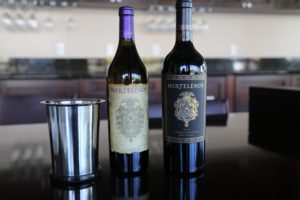
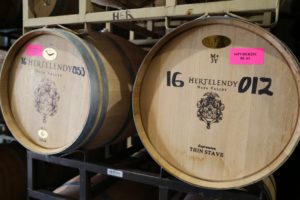 From 2015 through 2018 Hertelendy produced a limited production Chardonnay from the Ritchie Vineyard in the Russian River Valley of Sonoma County. Ralph was always the last or among the last producers to pick from this site. The 2018 Hertelendy Chardonnay, Ritchie Vineyard Sonoma County is dark gold; ripe and sweet stone fruits were the first aromatics we noted including apricot, yellow nectarine and peaches in light syrup. Ripe pineapple. Creme brule and butterscotch. There is also a honeyed note at play here showing scents of honeycomb and honeysuckle. The palate delivers a richness of flavor and a fleshy viscosity. It reveals flavors of baked apple, honeycomb, ripe pineapple and apricot. This wine is holding up very well 6 years post vintage at time of our tasting. The finish is rich and flavor filled. This wine was aged for 19 months in nearly 100% new French oak barrels. But the oak is clearly not the dominating presence here.
From 2015 through 2018 Hertelendy produced a limited production Chardonnay from the Ritchie Vineyard in the Russian River Valley of Sonoma County. Ralph was always the last or among the last producers to pick from this site. The 2018 Hertelendy Chardonnay, Ritchie Vineyard Sonoma County is dark gold; ripe and sweet stone fruits were the first aromatics we noted including apricot, yellow nectarine and peaches in light syrup. Ripe pineapple. Creme brule and butterscotch. There is also a honeyed note at play here showing scents of honeycomb and honeysuckle. The palate delivers a richness of flavor and a fleshy viscosity. It reveals flavors of baked apple, honeycomb, ripe pineapple and apricot. This wine is holding up very well 6 years post vintage at time of our tasting. The finish is rich and flavor filled. This wine was aged for 19 months in nearly 100% new French oak barrels. But the oak is clearly not the dominating presence here.
Starting in 2016 Ralph changed to the Woolsley Vineyard for his Chardonnay. This site is located less than a mile from Ritchie Vineyard and like the Ritchie Vineyard is also planted to the Wente clone of Chardonnay. This is extremely old-vine Chardonnay; the grapes were planted in the 1970s. For reference, the oldest Chardonnay in the country grows in Sonoma Valley at Hanzel Vineyards (planted in 1953) and the oldest still growing Chardonnay in Napa Valley was planted in the late 1960s at Haynes Vineyard in Coombsville. And with the switch in vineyard sites, Ralph noticed he was able to more easily produce the style of Chardonnay he and his customers enjoy.
The 2019 Hertelendy Chardonnay Woolsley Vineyard Sonoma County is dark gold; this wine showcases the consistent Hertelendey ripe fruited and aromatic richness he gets from the variety. The bouquet offers stone fruit flavors of apricot, peach, yellow nectarine along with crème Brule, butterscotch and caramel. There is also a nutty character including of hazelnut along with a complementary note of toasted oak. However the focus is on the ripeness and richness of the fruit rather than any overt oaky influences. This wine showcases both a brightness and richness but also an elegance. Ralph has noticed this vineyard consistently produces notes of chamomile regardless of vintage. The palate highlights flavors of apricot and pineapple and lingers with a light note of toasted oak. Rounded and supple. This bottling was the 10th year anniversary of Hertelendy Chardonnay; in order to differentiate this significance, the bottle was sealed with wax. This wine spent 17 months aging in mostly new French oak barrels.
The 2020 Hertelendy Chardonnay Woolsley Vineyard Sonoma County is medium gold; notes of honeycomb were the first aromatic descriptor we noted for this bottling. And like the other vintages of Hertelendy Chardonnay, this wine also offers stone fruits including of apricot and yellow nectarine. The bouquet is both sweetly fruited and ripe. The bouquet is perhaps a bit more floral than some of the other vintages including honeysuckle and guava. The palate is fresh and is dominated by the fruit rather than the oak. This bottling is rich and flavorful; the fruit-filled finish is persistent, accompanied by a light touch of toasted oak. This wine is showing exceptionally well at the time of our tasting, 3.5 years post vintage. Like the previous vintage, this wine was aged for 17 months in primarily new French oak barrels.
The 2021 Hertelendy Chardonnay Woolsley Vineyard Russian River is medium gold; the bouquet sports a youthful freshness of fruit with its characteristic stone fruit flavors but there is also a note of lemon zest. As the wine evovles in the glass this latter aromatic fully disappates making way for tropical aromas including notes of mango, ripe papaya, guava, passion fruit and ripe pear. It is also floral with scents of star jasmine and honeysuckle. The palate is brightly lit from the acidity, rich from the flavor and rounded and supple from the texture. Like the bouquet, the palate is youthful focusing on its fruit core rather than oak. This bottling has richness and ripeness but also bright acidity. Flavors include pineapple, stone fruits and red apple. Its texture is rounded, supple and flows like velvet over the palate. This wine drinks very well by itself; the finish begs another sip which is always the highest complement one can bestow upon a wine.
While enjoying a Coors Light in a hot tub one evening, Ralph remembered the Code Blue Coors Light commercial promoting the mountains on the label of their cans turning blue when the the beer can reaches an optimal temperature for drinking (43-50 degrees F). He reflected on all the times his own customers asked him about the proper temperature to serve the Hertelendy Chardonnay. For reference, he recommends serving in the low 50s F and then enjoying it as it begins to warm up a few degrees in the glass.
He began wondering if a similar idea using thermochromic ink might work well on some of his own wines. It wasn’t an easy process; his own printing company had never worked with this type of ink so he had to find and source it from a third party provider. The use of this ink is rare in the wine industry; the first time we saw it was at Champagne Francart in France. And the only other time Ralph has seen it in use was from a wine producer in South America. The label on his Chardonnay turns purple when the wine bottle is at 50 degrees F.
The 2014 Hertelendy Vineyards Russian River Chardonnay plays to a different tune then a number of the Napa Valley Chardonnays we have tried over the years. This wine was crafted from two clones – old vine clone 4 and the Dijon clone. Each block was picked separately and were harvested after the neighboring blocks were already picked. The wine was fermented with indigenous yeasts in new French oak barrels and then aged sur lie in the same barrels for the next 15 months. Bottled unfined and unfiltered. Remarkably this wine does not show a lot of barrel characteristics one would assume might show with this type of oak program. It is very aromatic and reveals aromas of guava, honeysuckle, citrus blossom and melon. The palate is not as creamy as one might expect; the flavor profile is rich and layered with a perceived hint of sweetness. Bright acidity shows on a lingering clean finish. This wine drinks very well by itself.
Reds
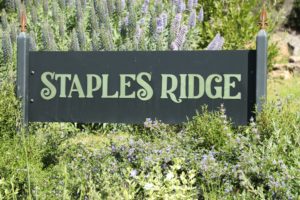
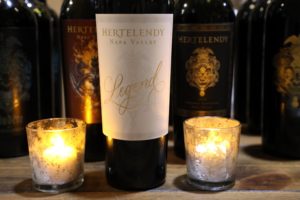
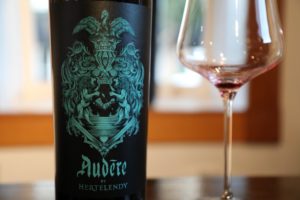 Every year since 2013, Hertelendy produces a proprietary red blend called Audēre; the varietal percentages in this blend change every year as do the vineyard sources. But it is usually dominated by Cabernet Sauvignon and Merlot. The focus of this bottling is to produce a premium wine that is balanced, easy drinking, and over delivers for the price point. This wine is clearly one of Napa Valley’s best quality to price point bottlings. And it features a cool factor: the label glows in the dark.
Every year since 2013, Hertelendy produces a proprietary red blend called Audēre; the varietal percentages in this blend change every year as do the vineyard sources. But it is usually dominated by Cabernet Sauvignon and Merlot. The focus of this bottling is to produce a premium wine that is balanced, easy drinking, and over delivers for the price point. This wine is clearly one of Napa Valley’s best quality to price point bottlings. And it features a cool factor: the label glows in the dark.
The 2019 Hertelendy Audēre Red Blend is 43% Cabernet Sauvignon, 43% Merlot, 10% Cabernet Franc, 3% Malbec and 1% Petit Verdot. This wine is deep ruby; along with the fruit there is a pronounced dark character to the bouquet including aromas of dried tobacco leaf and dried herbs including sage, a light woodsy spice, a gamey nuance, and the resulting smell of water poured on a hot slate rock sitting in the sun. This is a bouquet with character and plenty of aromatic layering. The palate is balanced and mirrors some of the darker expressions found in the aromatics; it offers flavors of plum, dark raspberrry, blackberry and red cherry. The acidity is bright but not tart. The tannins are light gravelly in texture and linger with a light dusty character accompanied by a tobacco spice on the finish.
Due to the fires in 2020 and having the flexibility to pivot to other vineyard sites, Hertelendy focused on vineyards in the southern part of Napa Valley – away from the immediate source of the Glass Fire. These sites included along the “Silverado Bench” in the hills north east of the city of Napa along the Silverado Trail, Coombsville and Sugarloaf Vineyard in the hills southeast of the city of Napa.
The 2020 Hertelendy Audēre Red Blend is 77% Cabernet Sauvignon, 12% Merlot, 8% Cabernet Franc, 2% Malbec and 1% Petit Verdot. This wine is deep ruby; unlike the 2019 bottling, the aromatic focus here is on a sweetness and ripness of fruit including boysenberry jam, blackberry, black fig and other dark berries. There is also a darker baking spice layer on the bouquet. The palate is ripe but is complemented by a balanced acidty. It offer flavors of blackberry, Pakistani mulberry, dark plum and black licorice. A note of dark chocolate lingers on the finish. The tannins are lightly gravelly and grainy. Balanced. The brightly lit finish lingers with a light note of tobacco spice. This wine was aged for 23 months in 90% new French and Hungarian oak barrels. This vintage earned a silver medal at 2023 Texcon
The 2021 Hertelendy Audēre Red Blend is deep ruby and amanranthine in color; the bouquet sports mostly dark fruited aromas of blueberry, blackberry, bosyenberry and noted by Ralph, a dark cherry liqueor. There is a pleasing influence from the barrels on this wine in the form of darker baking spices. There are also scents of dark chocolate and rose petals. The palate reveals flavors of dark plum and blackberry. The brightness and youthfulness of the fruit stands out at this age. The tannins are gravelly and grainy. A word like pixelated, a word we first saw used by Master of Wine Vanessa Conlin, is an ideal adjective to describe how these tannins feel. They are energetic, broadly distributed across the palate and their youthful prescence outpaces the fruit on the extended finish.
The inception for the label on the Hertelendy Cabernet Franc came from an introduction Ralph made while pouring his wines at the Los Angeles Food & Wine Festival. A gentleman walked up to his table and introduced himself as a wine nerd. They began taling about topics other than wine and they soon discovered that they both enjoy heavy metal music. This individual connected Ralph to the artist Shawn Coss who then told him to talk to Rob Shields who is known for his augmented reality visuals. The Hertelendy label for their Cabernet Franc comes to life in a dramatic fashion when looking at it using the Heavy Metal App and is worth downloading just to look at this particular wine label.
The 2019 Hertelendy Cabernet Franc; this wine is deep ruby in color. Open-knitted immediately out of the gate, the aromatics are not shy. The nose is bright with aromas of blackberry and dark raspbery accompanied by a very light woodsy spice. The focus here is clearly on the purity of the fruit with the barrel influences a complementing character. Some of the flavors are mirrored on the palate including red and darker fruits. The tannins are woven tightly with a gravelly texture. The flavors including red cherry, raspberry and currant parralel the tannins for some time. The finish is more red fruited than dark. Bright and alive this wine has plenty of life ahead of it with the proper cellaring. The refreshing and vibrant finish begs another sip.
The 2020 Hertelendy Cabernet Franc is a deep ruby color; the bouquet offer aromas of mocha, brown chocolate, toasted oak, caramel and assorted baking spices including clove and cardamom. The palate sports flavors of raspberry, cherry, and on the finish, a note of mocha. Brightly light. Lingers with more red fruit on finish. The tannins show perhaps more rounded and softer than the 2019 vintage, a representative characteristic of the 2020 vintage. This wine lingers with a light tartness. This is one of Hertelendy’s more savory showings. The tannins are gravelly textured. Mouth watering. And Hertelendy insiders and enthusiasts take note; this was Ralph’s favorite wine produced in 2020. Most of the grapes for this bottling were sourced from from Silverado Bench.
The 2021 Hertelendy Cabernet Franc is deep ruby; of the three vintages we tried, this wine shows the most herbal character, including a red chili spice, tomato leaf and green olive. The palate offers flavors of red cherry, cherry cola, and blueberry. This wine is well-layered on both the bouquet and the palate. The tannins are grainy and grippy in their youth with a finish that lingers with a light woodsy spice. This bottling is built on layers and complexity or as Ralph likes to call it, “the 50 shades of Hertelendy”. This wine finishes with flavors of red cherry, red plum and currant. Dusty finish. Notes of garigue. A chalky minerality. It is highly energetic showing plenty of youthful vibrancy. This is a wine we hope to taste with Ralph in another 10 years. The freshness on the finish is noteworthy. This wine needs plenty of time to open in its youth. Most of the grapes were sourced from Atlas Peak and the Silverado Bench.
The 2019 Hertelendy Cabernet Sauvignon is a blend of 87% Cabernet Sauvignon, 8% Malbec, 4% Petit Verdot, and 1% Merlot. This wine is deep ruby and opaque in the glass; the bouquet sports aromas of blackberry, darker baking spices, chocolate, graham cracker, accompanied by a sweet baking spice deeper in the aromas including clove and cardamom. The fruit is the star of the show here with plum, blackberry and dark raspberry. The tannins are granulated, and bounce around the palate like an energetic teenager, 5 years post vintage at the time of our tasting. One can feel the density and gripping character of their presence. This wine has the power of youth and probably will for at least several more years. The finish is brightly lit with a union of both red and darker fruit flavors. Mouth watering. We could see pairing this wine with a juicy medium-rare and well marbled steak. A big boy Napa Valley Cabernet Sauvignon, this is a powerhouse Napa Valley bottling well worth seeking out. The finish lingers with a drying character including of dried herbs.
The 2021 Hertelendy Cabernet Sauvignon is deep ruby and opaque; this wine is highly aromatic with notes of dark plum, blackberry, and raspberry. There is also a layer of petrichor. This wine offers complexity without being too intense or too grippy in terms of the texture. Starting in 2021, Hertelendy began using a proprietary piece of winemaking equipment. This equipment is especially favorable in terms of taming mountain tannins and its use clearly reflects in terms of a softening of the palate resulting in a wine that is more approachable in its youth. This wine reveals flavors of dark plum, cherry and currant. The rounded tannins linger with a light dusty character and a slightly tart and mouth watering sensation on the finish.
The 2013 Hertelendy Cabernet Sauvignon (inaugural release and tasted in 2016) is quite dark garnet color in the glass; it shows darker fruit scents which are both seductive and intriguing with a subtle undertone of darker chocolate and in the far reaches of the bouquet, a lingering spice component (Asian spices). On the palate there are ripe blackberry and blueberry flavors featuring fruit rather than oak. The tannins are certainly noticeable but are not grippy or robust in nature nor are out of balance. Very nice texture. Well integrated with the fruit, the finish shows a tartness (red currant) and slightly chalky/earthy tannins, both lasting for some time. The grape sources are from select vineyards in Napa Valley including from Atlas Peak and Coombsville.The 2013 Hertelendy Cabernet Sauvignon Napa Valley is deep ruby in color; we tried this wine again 11 years post vintage. The bouquet has developed some bottle bouquet but not as much as we would have thought. It sports aromas of cherry, darker berries, chocolate and a sweet tobacco spice. The fruit core is still showing loud and clear on the bouquet. Balanced across the palate, this wine reveals flavors of berries, dark raspberry and plum. There is plenty of fruit here and this wine can easily go another 10 years. Bright acidity. Mouth watering finish. Has aged very well. Creamy texture. One can feel the density of tannins but age has softened and rounded them nicely. No pre teen age year shut down here. The finish lingers with a note of dried tobacco leaf and a persistent drying character.
Ralph purchased a four-acre property on the edge of Howell Mountain, with the uppermost part of the vineyard only 35 feet below the Howell Mountain sub appellation. This vineyard is planted to Merlot dating from 1993. The closest vineyard neighbor is Sommnium, owned by former race car driver Danica Patrick. Ralph was originally going to replant to Cabernet Sauvignon and Cabernet Franc but after he tasted the Merlot he changed his mind. He began to drop more fruit and changed the canopy in order to produce an even higher quality grape. Both Ralph and his vineyard manager have spent significant attention to detail in improving the quality of production from this vineyard. In addition, they also planted several more rows.
The vineyard is appropriately named Rockwell Ridge Estate. Sitting at an elevation of just below 1,400 feet, there are excellent views of Napa Valley in the distance. Ralph grew up in a small community in the San Francisco Bay Area called Rockridge on a street named Rockwell. His vineyard terroir features a significant number of rocks and there is a well on the property. The name Rockwell remarkably ties this all together in a tidy fashion.
After the purchase of this vineyard, Hertelendy created a new wine called the Signature Mountain Blend. If one does not know that the majority of this wine (82%) is Merlot from their estate vineyard, one would perhaps mistake this for a Cabernet Sauvignon based wine.
The 2019 Hertelendy Signature Mountain Blend is predominately from the Hertelendy Rockwell Ridge Vineyard on the slopes just below Howell Mountain. This bottling also has grapes from Pritchard Hill and Atlas Peak. This is Hertelendy’s equivalent of a Bordeaux Right Bank bottling and is always Merlot dominated with over 50% of this variety in every vintage. This vintage is a blend of 62% Merlot, 18% Cabernet Sauvignon, 8% Malbec, 7% Petit Verdot and 5% Cabernet Franc. It is dark ruby; the bouquet is dark fruited with scents of plum, blackberry, dark cherry, espresso and mocha. The palate offers flavors of plum and blackberry. Dusty finish. Volcanic terroir. This wine reveals a light toasty oak on finish with an accompanying and persistent drying character. The tannins are grippy but not robust and that is an important distinction. Balanced but with complexity, Cabernet Sauvignon enthusiast will be attracted to this wine.
The 2020 Hertelendy Signature Mountain Blend was crafted primarily from grapes from Sugarloaf Mountain and Coombsville, both sites in the southern part of Napa Valley. This wine is a blend of 80% Merlot, 10% Cabernet Sauvignon, 4% Cabernet Franc, 3% Malbec and 3% Petit Verdot. It is deep ruby and opaque with an amaranthine rim. This vintage is focused on its primary fruit characters with the secondary aromatics showing as more subtle. The bouquet sports aromas of dark cherry, boysenberry and blackberry with light chocolate. If you have any perceived notions about the quality of this particular vintage, this bottling will change your perception. The flavors are both red and dark fruited, dominated by red cherry, red plum and currant. Light tartness. Lingers with dry tobacco spice and a light tartness framed by gravelly textured tannins. Dry rub T-bone steak and BBQ please.
The 2021 Hertelendy Signature Mountain Blend is deep ruby; on the nose there are scents of chocolate brownie, Santa Rosa plum, dark cherry and blackberry. A freshness is noticeable both on the bouquet and the palate of this vintage in particular; it is bright and lively with flavors of red cherry, red plum, black berry and dark raspberry. The finish is vibrant with a lingering red-fruited tartness. Mouth watering. Grainy and granular tannins outpace the fruit on the finish. Lingers with a drying character. In a blind tasting we would be hard pressed to identify this as a Merlot dominated wine. This is a layered and complex bottling.
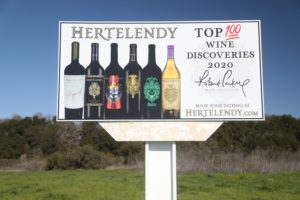
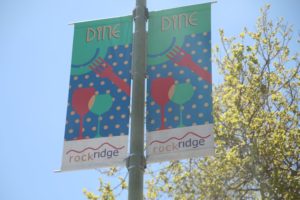 The 2014 Hertelendy Signature Mountain Blend was not yet released at the time of our first tasting and visit with Ralph; it was sourced from Atlas Peak and Pritchard Hill. This bottling initially shows a hint of dust on the bouquet but as it opens it reveals an aromatic sweetness of fruit with brown chocolate transitioning into an almost warm vanilla characteristic. The palate alternates between red and black fruit – showing as Ralph calls it, a “purity of fruit”. It features well integrated tannins which are noticeably more robust than the 2013 Hertelendy Cabernet Sauvignon.
The 2014 Hertelendy Signature Mountain Blend was not yet released at the time of our first tasting and visit with Ralph; it was sourced from Atlas Peak and Pritchard Hill. This bottling initially shows a hint of dust on the bouquet but as it opens it reveals an aromatic sweetness of fruit with brown chocolate transitioning into an almost warm vanilla characteristic. The palate alternates between red and black fruit – showing as Ralph calls it, a “purity of fruit”. It features well integrated tannins which are noticeably more robust than the 2013 Hertelendy Cabernet Sauvignon.
The pinnacle of the Hertelendy bottlings is the Legend Cabernet Sauvignon; this wine is always made entirely from free-run juice and is always dominated by Cabernet Sauvignon.
The 2019 Hertelendy Legend Cabernet Sauvignon is a blend of 83% Cabernet Sauvignon, 8% Malbec, 4% Petit Verdot, 4% Cabernet Franc and 1% Merlot. This wine is dark ruby and opaque; the purity of the fruit on the bouquet is clearly evident. Ralph always notices that the free run juice contributes a a mixed berry compote to this wine regardless of vintage. It offers aromas of blackberry, dark plum and blueberry. This wine is very primary in its aromatic presentation. It is a bowlful of cherries and blackberries with an intensity of flavor mirroring the strength of the aromatics. This bottling features both simultaneous power but also a balance. The finish is dark and savory supported by grainy tannins, dried tobacco leaf and crushed dark pepper. It was barrel aged for 23 months in 90% new French and Hungarian oak. A Texas steak lover’s wine. Or as Ralph more eloquently puts it, “drinking this wine is like hearing the ethereal sounds of Angels”.
The 2021 Hertelendy Legend Cabernet Sauvignon is dark ruby and opaque; the bouquet sports scents of blackberry at the peak of its ripeness and reminded us of harvesting these fruits in our youth in mid summer. If also offers aromas of Santa Rosa plum and a sweet tobacco spice. The palate is bright, energetic and highlights flavors of red plum, blackberry, currant and red cherry. The tannins linger with a moderate and drying grip on the energetic finish, and as Ralph pointed out contribute a fleshy character to the wine. Their presense is long lasting and far outpaces the fruit at this age. Complex, layered and persistent, this wine in particular needs some time to open in its youth and those who are patient will be richly rewarded.
If this wine was a boxer, it would be Oakland’s own Andre Ward, a fighter who was undefeated during his professional career and punched with power yet danced with grace. Only three barrels were produced. For reference we tasted this in early 2024 prior to its release that same year in the fall. Our rating: 100 points. This will be the first, only and last point score we ever give to a wine on the Napa Wine Project. This wine is certainly deserving of such a distinction, and Ralph has more than earned it.
With a demand by his customers for Pinot Noir, Hertelendy produced their first bottling of this variety in 2022 from the Russian River Valley.
Crystal Springs Sub Appellation
An application for the Crystal Springs sub appellation was filed in 2020 by Steve Burgess (former proprietor of Burgess Cellars). This AVA was under review at the TTB until it was finally approved on October 16, 2024. It was Napa Valley’s 17th sub appellation and the first one since Coombsville received its final approval in December 2011. Ralph became involved early on in the efforts to created this AVA; his hillside property between Deer Park and Angwin is within it’s confines.
Its boundaries encompass all hillside locations and range in elevation from 400 to 1400 feet. The sub appellation is 4,000 acres and includes approximately 30 commercial vineyards.
—
Total production is usually between 1,000 and 1,200 cases annually. The wine is sold direct and was initially also sold to select restaurants in California including locally at the French Laundry in Yountville, and Morimoto in Napa. Over time they have built up distribution to select locations around the country encompassing approximately 50% of the states.
One of the city of Napa’s oldest and most recognized tasting rooms is Vintner’s Collective. They feature a number of small premium producers including Hertelendy with tastings of their clients’ wines available by either walk-in or reservation. Ralph also participates in numerous tasting events around the country including the Kapalua Wine and Food Festival in Hawaii.
The Hertelendy Foundation was founded in 1997 by Ralph and his family and over the decades has supported a variety of activities both domestically and internationally. Some of their financial support has gone towards humanitarian aid, education, science, culture and environmental causes.
Tastings can be arranged by appointment and are often hosted with Ralph at the hidden away Caves at Soda Canyon where the Hertelendy wines are produced. For more information about these exciting wines, or to become a wine club member, visit: www.hertelendy.com
Badacsony, Hungary
Szedgedy Roza Haz Museum, Badacsony Hungary
Hertelendy Memorial, Hungary
Matyas Templom, Matthias Church, Budapest
The crypt has not been open during our several visits over the past few years. We hope to gain access to this at some point to see some of the Hertelendy family members.
Budatin Castle, Slovakia
Notes, visit and photographs coming by 2025 or 2026.
Spiš Castle, Slovakia
Notes, visit and photographs coming by 2025 or 2026.

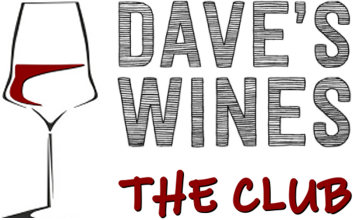





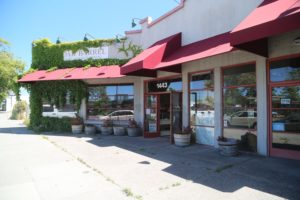
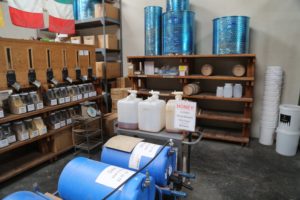
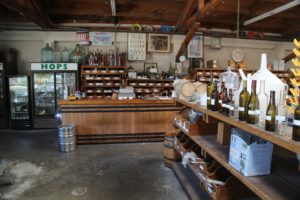
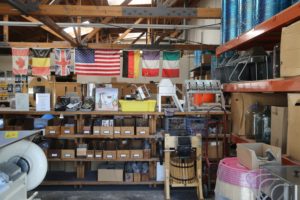
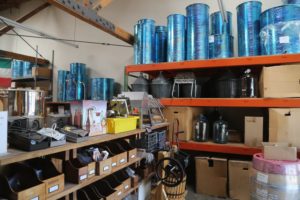
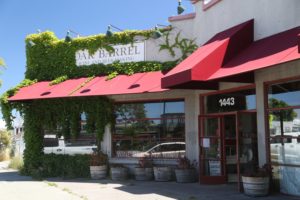

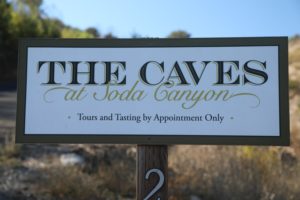
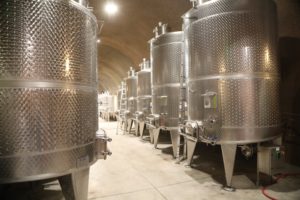
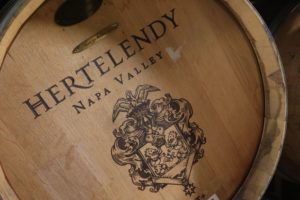
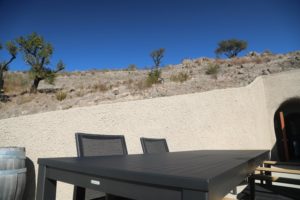
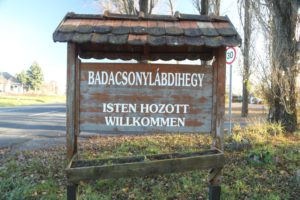
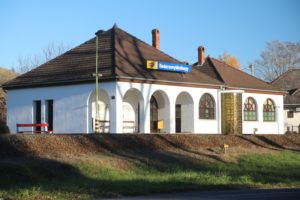
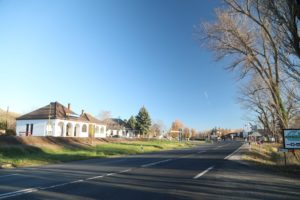
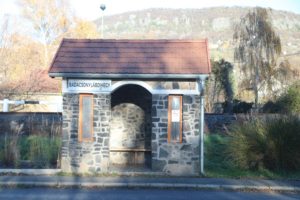
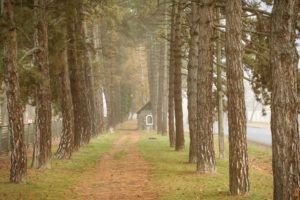
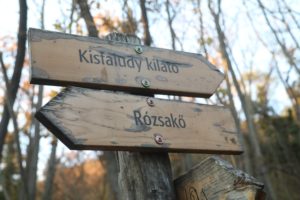
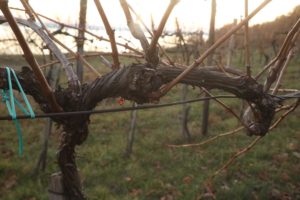
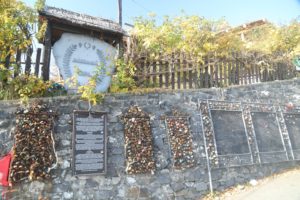
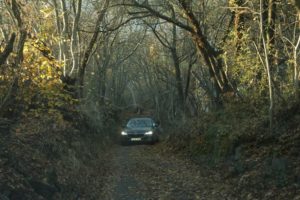
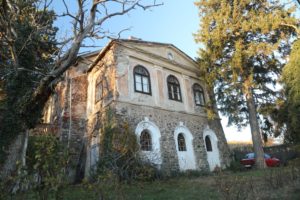
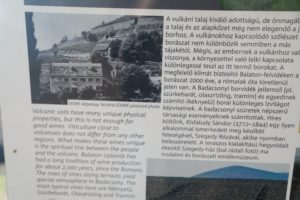
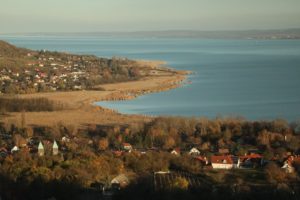

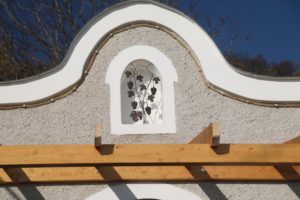
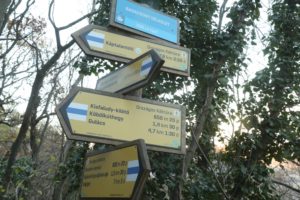
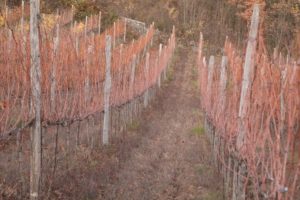
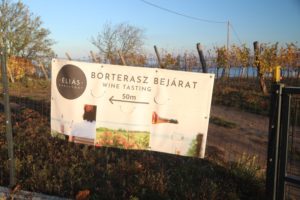
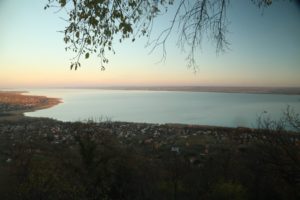
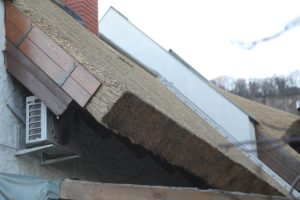
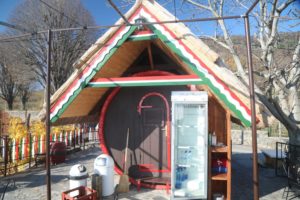
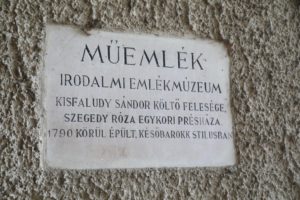
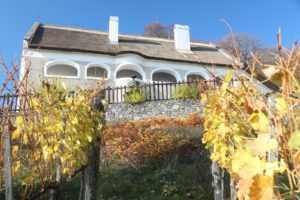
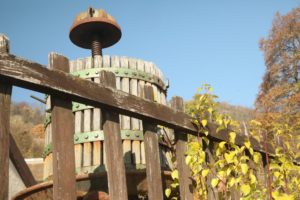
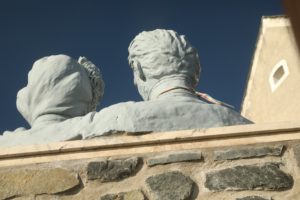
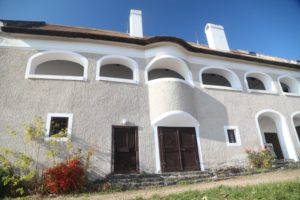
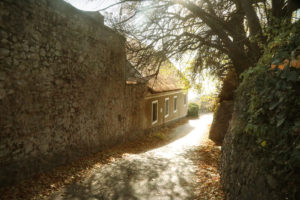
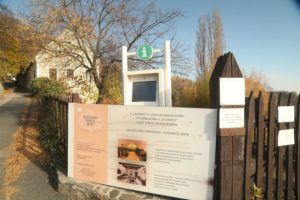
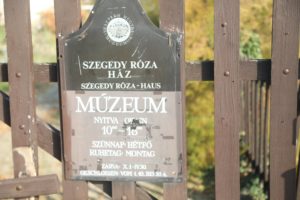
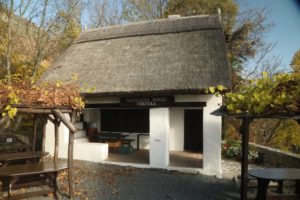
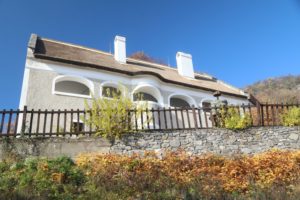
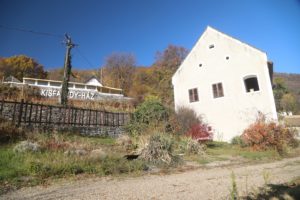
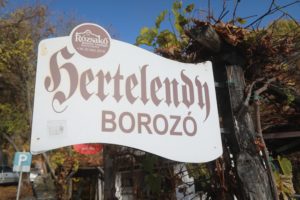
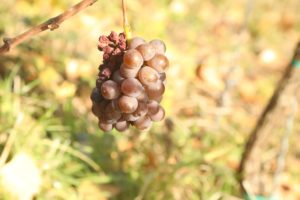
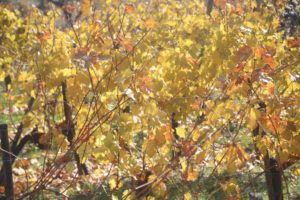
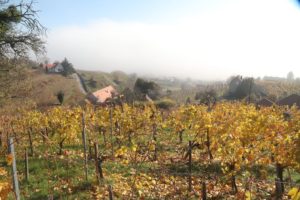
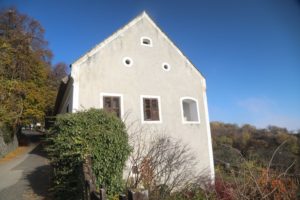
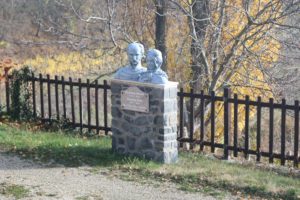
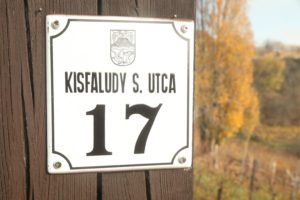
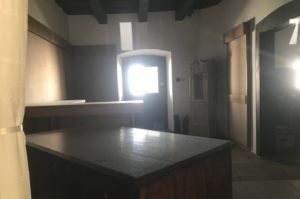
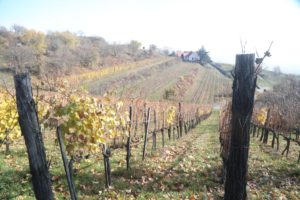
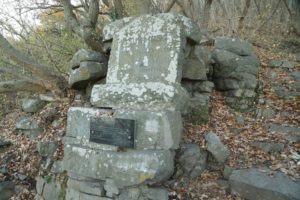
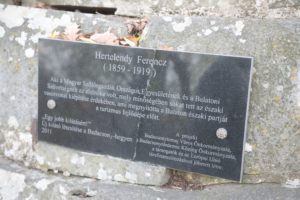
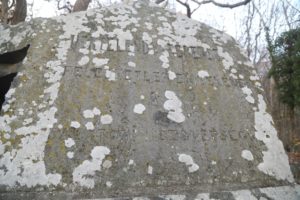
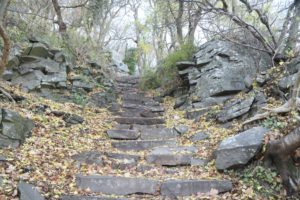
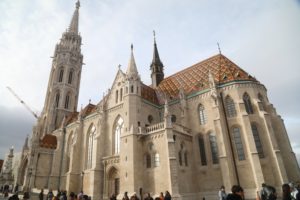
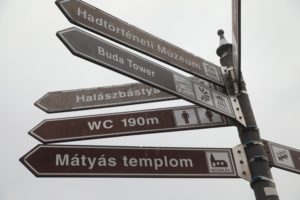
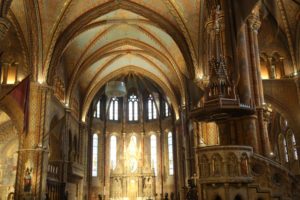
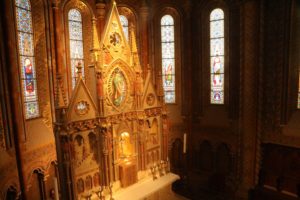
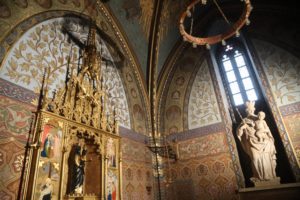
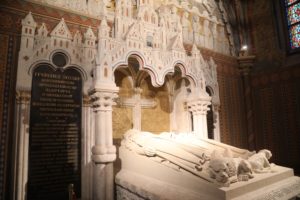
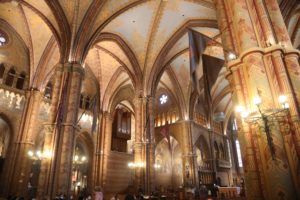
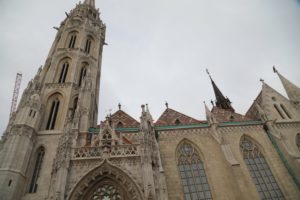
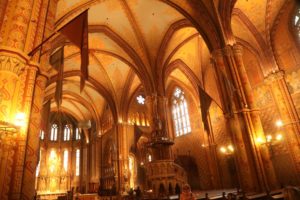
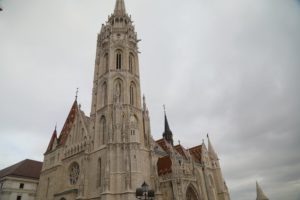
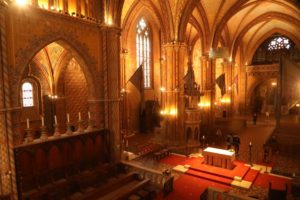
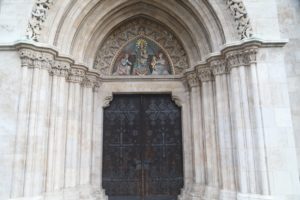
Leave a Reply